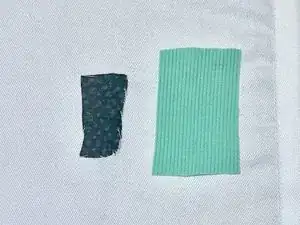Introduction
It happens to all of us- you walk a little too close to a desk corner, or maybe you snag your clothes on a tree branch, and you’ve torn your shirt or pants. Don’t fret; there is a way to fix this! This document will offer step-by-step instructions on how to hand-sew a patch onto your clothes using recycled fabric.
Tools
-
-
Decide what recycled fabric you would like to use as a patch and cut a rectangle just larger than the hole in your clothes.
-
Lay your patch over the hole to cover it entirely and ensure that the patch covers all sides with seam allowance.
-
-
-
Thread your needle by pulling one end of the thread through the eyes of the needle.
-
Pull your needle along the thread to the center and pull the thread straight so that the ends align.
-
-
-
Center and place the patch over the hole.
-
Secure the top edge of your patch using straight stitch, ensuring to pull any access thread through along with the needle.
-
Make as many stitches as you need to reach the end of your patch, with your final needle position on the backside of your fabric.
-
-
-
Cut excess thread using your scissors, leaving plenty of room for a knot.
-
Tie a double-knot in your thread.
-
You're all finished! To remove a patch, carefully use scissors or a seam ripper to cut only the thread used to secure the patch to the base fabric. Be cautious not to cut the fabric.


















